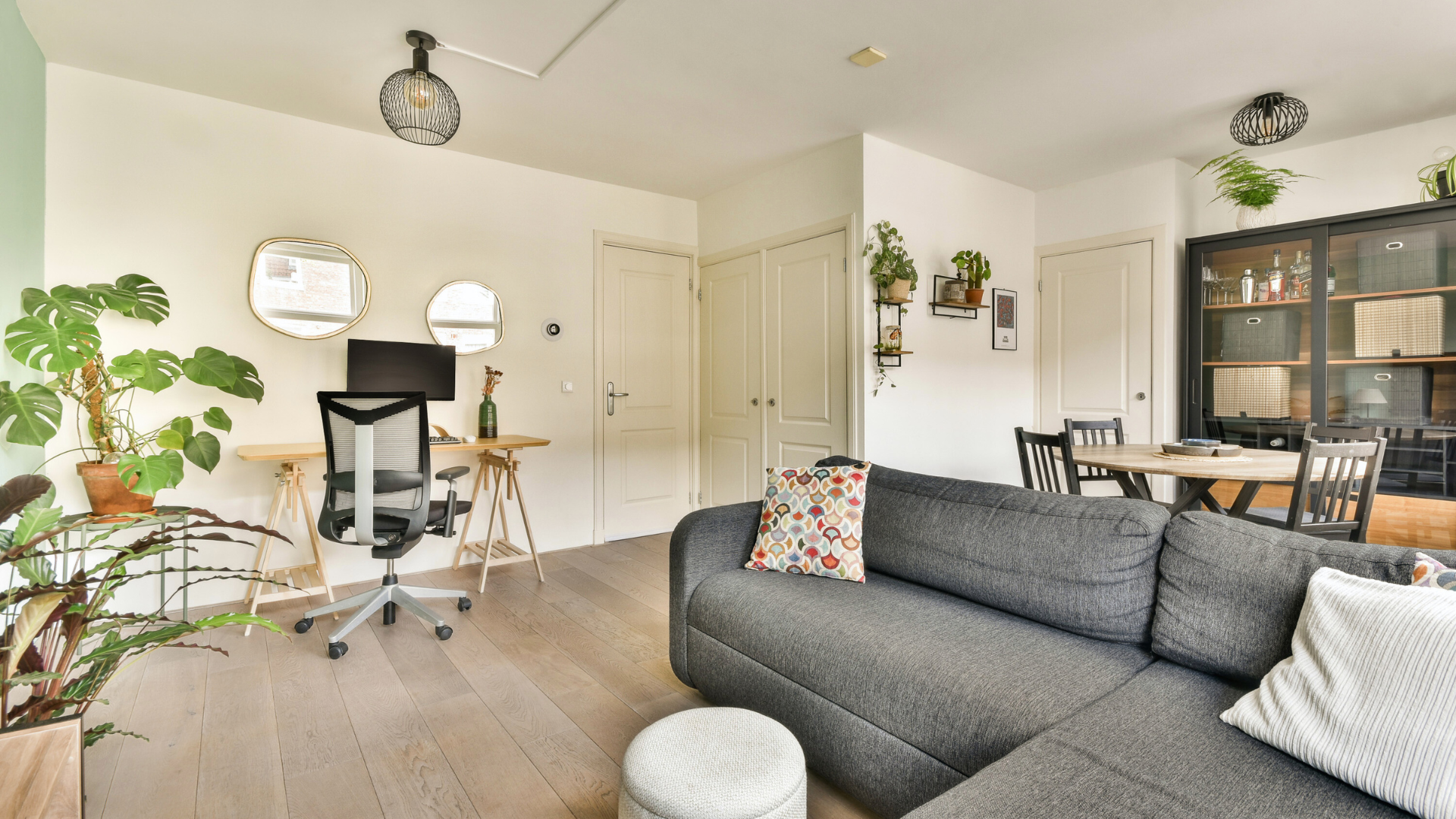Many people are embracing the work-from-home lifestyle, making it essential to create a space that promotes productivity. A functional home office balances comfort and efficiency, ensuring an optimal work-from-home experience. Thoughtful design choices can significantly impact focus and creativity.
The layout, furniture, and technology in a home office play a crucial role in its effectiveness. Selecting ergonomic furniture and organizing equipment can help prevent fatigue and distractions. Additionally, incorporating personal touches can enhance motivation and make the workspace more inviting.
As individuals continue to navigate remote work, investing time and effort into home office design can lead to remarkable benefits. Proper planning ensures that the workspace remains a productive environment, enabling success in both tasks and projects.
Designing Your Home Office Layout
Creating an effective home office layout involves careful consideration of location, space optimization, natural light, and a balance between functionality and comfort. Each aspect plays a crucial role in fostering a productive work environment.
Selecting the Right Location
Choosing the right location for a home office is essential. Ideally, it should be in a quiet area away from distractions. A spare room, basement, or even a corner of the living room can work well.
Ensure that the space receives good ventilation. This contributes to well-being while working. Proximity to power outlets and good internet connectivity is also vital.
If possible, select a location with a window. This can enhance natural light, making the workspace more inviting.
Optimizing Space in Small Areas
In small areas, maximizing space is critical. Start by measuring the room dimensions and planning accordingly. Choose furniture that is flexible and can serve multiple purposes.
Consider wall-mounted desks or foldable tables to save floor space. These options provide a sturdy work surface without taking up too much room.
Use vertical storage solutions like shelves to keep essential items within reach. This reduces clutter and enhances productivity.
Incorporating Natural Light
Natural light significantly impacts mood and productivity. Position the desk near windows if possible. It helps reduce eye strain and creates a more open feel.
Using sheer curtains can diffuse harsh sunlight while still allowing light in. This balance maintains a bright workspace without glare.
Incorporating mirrors can also enhance the effect of natural light, making the space appear larger.
Balancing Function and Comfort
A functional workspace should prioritize comfort and ergonomics. Investing in ergonomic furniture can prevent strain during long working hours. Adjustable chairs and desks are beneficial.
A standing desk option promotes movement throughout the day, which can improve well-being.
Ensure that the desk height is appropriate for the user’s stature. The chair should support good posture for maximum productivity.
Adding personal touches like plants can contribute to a comfortable environment. They improve air quality and add a calming aesthetic.
Choosing Furniture and Equipment
Selecting the right furniture and equipment is critical for creating a functional home office. The choices made can significantly influence workspace productivity and comfort, ensuring an environment conducive to focused work.
Investing in an Ergonomic Chair
An ergonomic chair is essential for long hours of work. It provides lumbar support, helping to maintain proper posture and reduce discomfort. Look for chairs with adjustable features, such as height, backrest angle, and armrests.
Material also matters; breathable fabrics can improve comfort. Consider options with cushioned seating to minimize pressure points. Research shows that investing in a quality office chair can enhance productivity by alleviating fatigue.
For those considering high quality options like aeron chairs, make sure to be aware of the proper installation and modification methods. Consider watching an aeron chair adjustments video to learn how to customize the chair to fit your body perfectly for maximum comfort and support. Understanding how to properly adjust the ergonomic chair can be helpful in improving your overall work experience.
The Role of a Proper Desk
The desk serves as the central workspace in any office. A desk should complement the size of the room while providing adequate surface area for tasks.
Consider the height of the desk in relation to seated and standing positions. Desks with built-in cable management can keep the workspace tidy. Additionally, styles and materials should reflect personal aesthetics and the office’s overall theme.
Evaluating Standing Desks
Standing desks offer a flexible approach to working. They encourage movement, which can help reduce sedentary behavior. When evaluating standing desks, consider height-adjustability to accommodate different user preferences.
Some desks provide electronic adjustments for convenience, while others may require manual adjustments. A desk with a spacious surface will also help maintain an organized workspace. Their ability to promote circulation can lead to increased energy levels and focus.
Selecting Storage Solutions
Effective storage solutions keep the home office organized. Filing cabinets, shelves, and storage bins are crucial for reducing clutter.
Choose solutions that fit the office layout and style. Multi-functional furniture, such as desks with built-in storage, can maximize space. Ensure that frequently used items are easily accessible to maintain efficiency. Using labeled containers can further enhance organization and retrieval.
Enhancing Your Home Office Atmosphere
A well-designed home office atmosphere boosts productivity and well-being. Focus on specific elements like lighting, air quality, and personal touches to create an inviting and functional space.
Lighting and Task Lighting
Proper lighting is essential for maintaining focus and reducing eye strain. Natural light should be maximized; positioning the desk near windows can help achieve this. Use sheer curtains to diffuse harsh sunlight while still allowing ample light to enter.
In addition to natural light, incorporate various artificial light sources. Task lighting, such as adjustable desk lamps or pendant lights, provides focused brightness for specific tasks. Opt for LED bulbs with a color temperature around 4000K, as they simulate daylight and enhance concentration.
Improving Air Quality and Ventilation
Good air quality promotes cognitive function and overall health. Ensure adequate ventilation by opening windows regularly or using exhaust fans. This allows fresh air circulation, reducing carbon dioxide levels that can lead to fatigue.
Also, if there are any air conditioning units in the home office, ensure that their vents are regularly cleaned. Accumulation of dust, pollen, and other airborne particles in vents is one of the prime culprits of compromised indoor air quality. It can be beneficial to seek professional Air and Dryer Vent Cleaning Avondale (or in the locality) services in such cases. Regular cleaning improves the efficiency and safety of the air conditioning units, and it can pose major improvements in the air quality as well.
To further improve air quality, consider using an air purifier. Choose one with a HEPA filter to trap dust, pollen, and toxins effectively. Maintaining a humidity level between 30-50% will also help prevent mold growth and maintain comfort.
Achieving Acoustic Comfort
Noise can significantly impact productivity. Use acoustic panels on walls to absorb sound and reduce distractions. Fabric-covered options can also enhance aesthetics while serving their purpose.
In addition to panels, consider using rugs and upholstered furniture to dampen noise. If outside sounds are a concern, white noise machines or noise-canceling headphones can help maintain focus by masking disruptive noises.
Adding Personal Touches
Incorporating personal style into the home office contributes to a motivating environment. Choose decor that reflects individual tastes, such as artwork, photos, or inspiring quotes displayed prominently.
A well-coordinated color palette can enhance mood and creativity. Select colors that energize or calm, depending on personal preferences. This could include accent walls, furniture, or decorative items in your chosen hues.
Incorporating Indoor Plants
Indoor plants improve air quality while adding a sense of tranquility and life to the space. Plants such as snake plants, pothos, and peace lilies are low-maintenance and enhance aesthetics.
In addition, plants reduce stress and increase productivity. Placing them strategically on desks or shelves can create a more inviting atmosphere. Using decorative pots that align with the office’s color scheme can further integrate these plants into the design.

